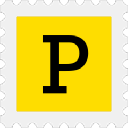On Starting A Software Company That Makes Mac Apps
I’m Bryan and I own a software company that makes Mac apps. My claims to fame are CodeKit and Muzzle. Muzzle went to #2 on ProductHunt for the year, so of course, the rest of this article will be about CodeKit.
CodeKit makes building websites easier for professional web developers by automating a lot of tasks. It’ll compile files, auto-refresh browsers as you work, optimize images, etc. The app is 10 years old and has built websites from BarackObama.com to Fleshlight.com. (Seriously.)
When I’m not writing software, I fly airplanes upside down.
Now, before we get any further into this, “I’M AN ENTREPRENEUR AND YOU CAN TOO!” article, I want to make it clear that I had a damn good bit of luck and timing on my side. I worked hard, but I happened to build the right app at the right time. To really succeed, you’ll have to find that right-thing-right-time sweet spot as well. The more problems you try to solve, the more likely you are to find them.
With that said, let’s get on with the pontificating.

Download the report and join our email newsletter packed with business ideas and money-making opportunities, backed by real-life case studies.

Download the report and join our email newsletter packed with business ideas and money-making opportunities, backed by real-life case studies.

Download the report and join our email newsletter packed with business ideas and money-making opportunities, backed by real-life case studies.

Download the report and join our email newsletter packed with business ideas and money-making opportunities, backed by real-life case studies.

Download the report and join our email newsletter packed with business ideas and money-making opportunities, backed by real-life case studies.

Download the report and join our email newsletter packed with business ideas and money-making opportunities, backed by real-life case studies.

Download the report and join our email newsletter packed with business ideas and money-making opportunities, backed by real-life case studies.

Download the report and join our email newsletter packed with business ideas and money-making opportunities, backed by real-life case studies.















